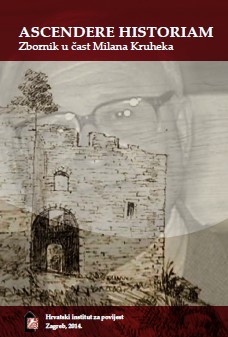Osmanski zapovjednici i struktura osmanske i habsburške vojske na hrvatskom dijelu krajišta (prema špijunskim izvještajima iz 1570-ih)
Ottoman military commanders and the structure of the Ottoman and Habsburg military forces on the Croatian Military Border (on the basis of spy reports from 1570s)
Author(s): Nataša Štefanec
Subject(s): Military history, Military policy, 16th Century, The Ottoman Empire
Published by: Hrvatski institut za povijest
Keywords: Military Border; espionage; the 16th century; Ottoman military forces; Ottoman military commanders; Ottoman fortresses; Habsburg military forces;
Summary/Abstract: The article analyses selected reports from the second half of the 16th century on the state of the Ottoman military forces facing the Croatian Military Border. Reports were usually written by Habsburg military commanders on the basis of spy reports and various intelligences. Reports analyzed in this article are rather precise and detailed. They were commissioned by the Court War Council in order to provide data on how to reform and restructure Habsburg military potentials on the Croatian Border. An insight into the Ottoman forces clearly suggests that Habsburg forces were fl awed and insufficient in many aspects such as the number of paid infantry and cavalry, the number of unpaid military and the number and condition of functional fortresses. Habsburg reforms that followed attempted to bring more balance into military affairs in the region. In addition to raw figures, reports brought data on the dispersion and usage of Ottoman forces as well as rather comprehensive lists of Ottoman military commanders by name and/or surname. Sometimes they even provided information on their family relations or their background which makes them highly usable in research of Ottoman military and social elites that resided opposite the Croatian Border. In order to facilitate the usage and comparison of data, spy reports are translated from German into Croatian and information are systematized in tables. Transcript of analyzed reports from Gothic into Latin script is attached in the appendix.
Book: Ascendere historiam: Zbornik u čast Milana Kruheka
- Page Range: 209-227
- Page Count: 19
- Publication Year: 2014
- Language: Croatian
- Content File-PDF

